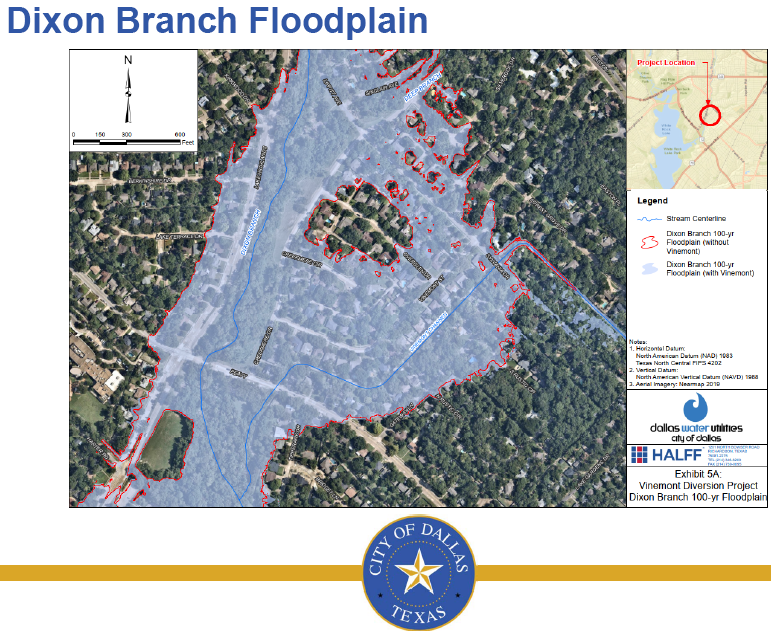
ENA General Meeting: Flooding Study Recap
Flooding in Eastwood: Studies Continue
Stormwater control requires wider scope, further research
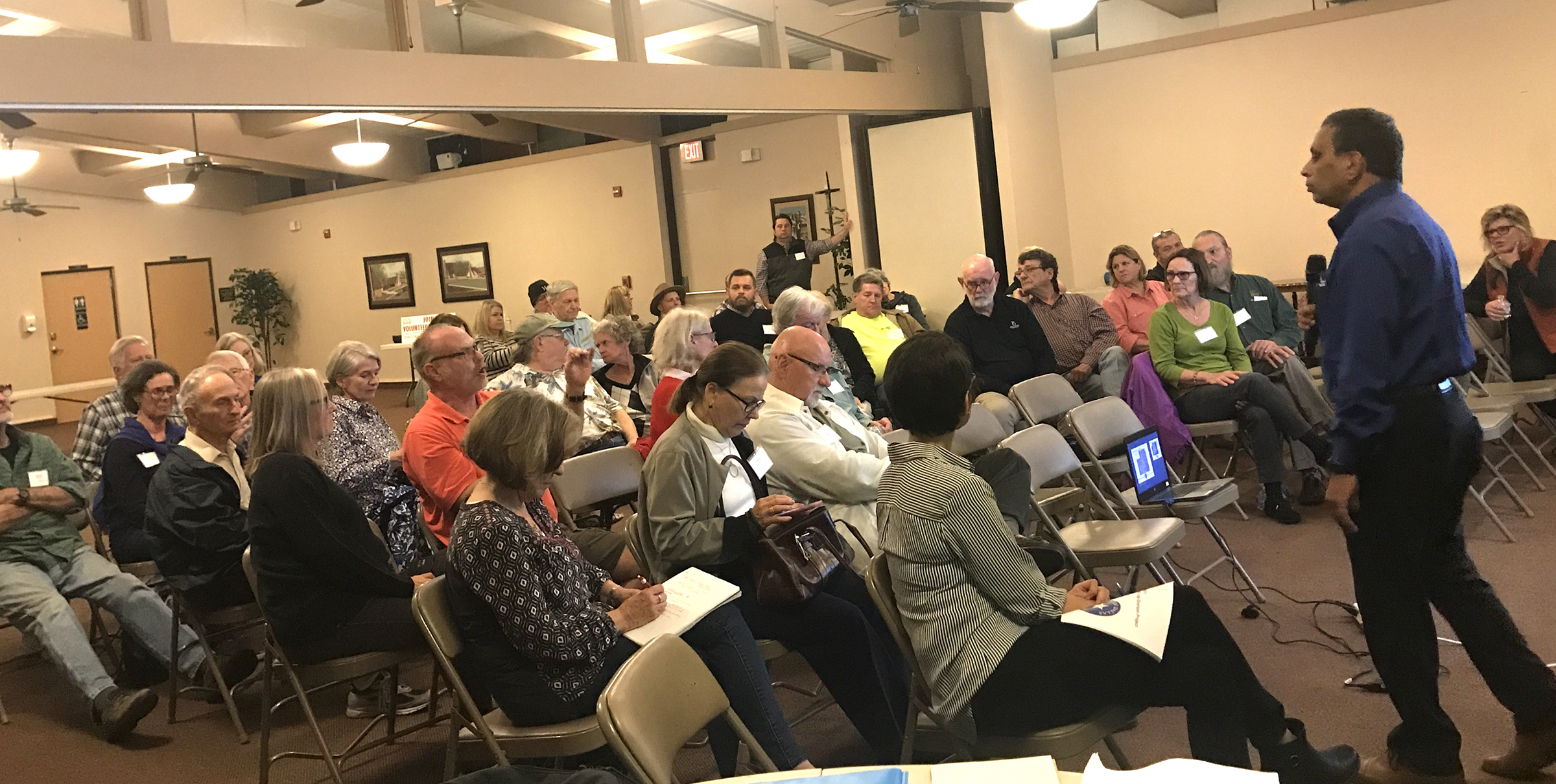
At the last Eastwood Neighborhood Association meeting, Abidur Khan, P.E., project manager for Dallas Stormwater Project Management, and Andrew Schimenti from Halff Associates, Inc., presented on the most recent Dixon Branch flooding research referred to as Vinemont Channel Diversion. Their focus was on the large 100-year flood plain area, while Eastwood also incurs localized flash flooding in the western regions near Peavy.
The underlying cause of both issues is that parts of Eastwood and Lake Park Estates were built in the 100-year flood plain of Dixon Branch. This would not be legal today, prohibited by city, state, and federal regulations. Dixon Branch extends north from the lake about 4.5 miles into southern Garland. Eastwood and Lake Park are located at almost the lowest point of its course.
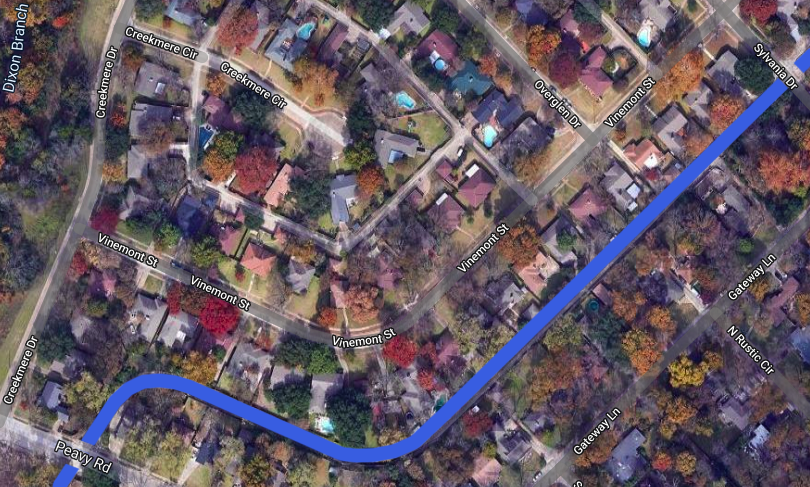
The main takeaway from the meeting was that the most economical solution — deepening or widening the Vinemont Channel (the submerged alley between Gateway and Vinemont) — would not help in a 100-year flood. The study looked at more expensive underground methods of diverting and detaining incoming rain and surface water using huge pipes and holding facilities. Computer simulations showed it is unfortunately not possible to divert and detain enough water.

Nor will these approaches aid in localized flash flooding. The problem stems from floodwater going down Dixon Branch and then backing up. A wider, more comprehensive solution focused on the creek is required.
Issues that Cause Flooding
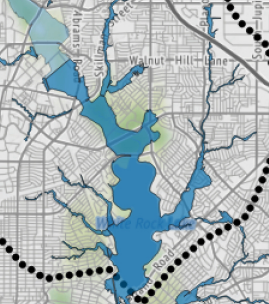
Developers are not required to set aside areas for absorption or retention of rain as required by most cities our size. Yet the city’s antiquated storm-sewer system cannot collect all the flash-flood water. This forces considerable overflow into Dixon Branch. For instance, flash flooding in Eastwood appears to have increased since the construction of two high-density housing developments upstream near Lake Highlands and E. Northwest Hwy.
Suggestions offered by residents at the meeting included proactively removing fallen tree debris from Dixon Branch and fining offenders who blow organic matter into gutters and storm sewers. But the excess organic matter, while harmful to the lake, does not significantly affect flash-flood waters, and most trees blocking the creek and culverts during a flood are brought down during the flood itself.
Dredging White Rock Lake does not increase its holding capacity for floodwater. It doesn’t matter if the lake is full (at or near the top of the spillway) of water or mud, there is no more room to accept floodwater except in the Eastwood floodplain. But even if the lake didn’t exist, parts of our neighborhood are still in the 100-year floodplain of White Rock Creek watershed which includes Dixon Branch.
Eastwood to Take Action
Flooding in Eastwood has been studied since the late ‘90s. The recent increase in localized flash flooding is of great concern to attendees, especially residents
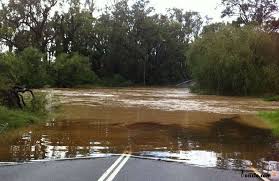
of Creekmere, Peavy, and Vinemont. But city staff and Halff consultants offered no suggestions for relief or indicated plans to broaden their focus to include flash flooding. Mr. Khan suggested being more diligent in debris removal requests to 311 during heavy rains.
City staff and Halff consultants will present their findings to District 9 City Councilperson Paula Blackmon and ask for using additional bond money on further study. The Eastwood Neighborhood Association board of directors will be communicating with Blackmon, stressing the need to immediately address localized flooding and include it in future studies.